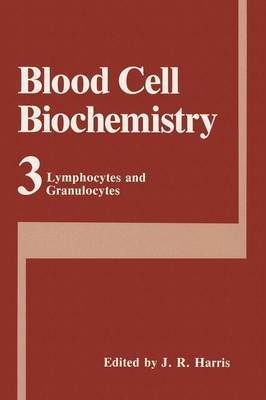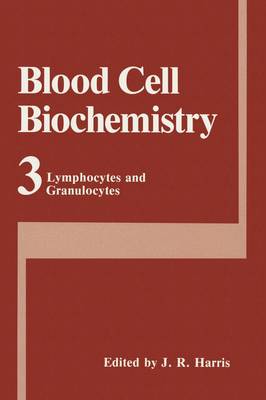
- Afhalen na 1 uur in een winkel met voorraad
- Gratis thuislevering in België vanaf € 30
- Ruim aanbod met 7 miljoen producten
- Afhalen na 1 uur in een winkel met voorraad
- Gratis thuislevering in België vanaf € 30
- Ruim aanbod met 7 miljoen producten
Zoeken
Omschrijving
1 Biochemical, Immunological, and Molecular Markers of Hemopoietic Precursor Cells.- 1. Introduction.- 2. Biochemical Markers.- 2.1. Terminal Deoxynucleotide Transferase.- 2.2. Enzymes in Nucleotide Metabolism.- 3. Immunological Markers.- 4. Molecular Markers.- 5. Analysis of Human Hemopoietic Ontogenesis by Immunological and Molecular Markers.- 6. New Opportunities for Immunological and Molecular Markers: Minimal Residual Disease Detection and Therapeutical Approaches.- 7. References.- 2 Cell Surface Markers in Leukemia and Lymphoma.- 1. Introduction.- 2. B Cells.- 2.1. Normal B-Cell Ontogeny.- 2.2. B-Cell Leukemias and Lymphomas.- 3. T Cells.- 3.1. Normal T-Cell Ontogeny.- 3.2. T-Cell Leukemias and Lymphomas.- 4. Myeloid Cells.- 4.1. Normal Myeloid Ontogeny.- 4.2. Myeloid Leukemias.- 5. Summary.- 6. References.- 3 Cytoskeletal Organization of Normal and Leukemic Lymphocytes and Lymphoblasts.- 1. Introduction.- 2. Microfilaments in Normal and Leukemic Lymphocytes and Lymphoblasts.- 2.1. Actin and Actin-Associated Proteins in Nonmuscle Cells.- 2.2. Actin Isoforms.- 2.3. Organization of Actin in Normal Lymphocytes.- 2.4. Interactions between Actin and Surface Antigens in Lymphocytes.- 2.5. Actin in Leukemic Lymphocytes and Lymphoblasts.- 3. Intermediate-Size Filaments in Normal and Leukemic Lymphocytes and Lymphoblasts.- 3.1. The Intermediate Filament System.- 3.2. Distribution of Vimentin in Lymphocytes in Normal Conditions.- 3.3. Vimentin in Neoplastic Lymphocytes and Lymphoblasts.- 3.4. Expression of Cytokeratin in Lymphoid Tissues.- 4. Microtubules in Lymphoid Cells.- 5. Organization of Spectrin in Lymphocytes.- 6. Conclusions.- 7. References.- 4 Signaling Events in T-Lymphocyte-Dependent B-Lymphocyte Activation.- 1. Introduction.- 2. B-Cell Antigen Receptor-Mediated Signaling.- 3. Molecular Bases of T-Cell-Mediated B-Cell Signaling.- 4. Biological Evidence for Ia-Mediated Signal Transduction.- 5. Biochemical Evidence for Ia-Mediated Signal Transduction.- 6. Conclusions.- 7. References.- 5 IgE Receptors on Lymphocytes and IgE-Binding Factors.- 1. Introduction.- 2. Historical Overview.- 3. Fc?RII on Lymphocytes.- 3.1. Fc?RII-Bearing Cells.- 3.2. Function of Fc?RII.- 3.3. Molecular Properties of Fc?RII.- 3.4. Regulation of Fc?RII Expression on Lymphocytes.- 4. IgE-Binding Factors.- 4.1. Rat.- 4.2. Murine.- 4.3. Human.- 5. Glycosylation-Regulating Factors: GEF and GIF.- 5.1. Rat.- 5.2. Murine.- 6. Interleukin 4 and Gamma Interferon.- 7. CD23 Antigen.- 8. Conclusion.- 9. References.- 6 Lymphocyte-Mediated Cytolysis: Role of Granule Mediators.- 1. Role of Granules and Perform in Lymphocyte-Mediated Killing.- 1.1. The Granule Exocytosis or Secretion Model for Cell Killing.- 1.2. Cytoplasmic Granules and Perform as Mediators of Cytotoxicity.- 1.3. A Family of Serine Esterases Localized in Lymphocyte Granules.- 1.4. Proteoglycans.- 1.5. Leukalexins and Cytokines Related to Tumor Necrosis Factor and Lymphotoxin.- 2. Other Candidate Mechanisms of Lymphocyte-Mediated Killing.- 3. Resistance of Lymphocytes to Self-Mediated Killing.- 4. Conclusion.- 5. References.- 7 CR1-Cytoskeleton Interactions in Neutrophils.- 1. Introduction.- 2. Detergent Extraction of Cells.- 3. Receptor-Cytoskeleton Interactions.- 4. The C3b Receptor (CR1).- 5. References.- 8 The Flow of Granular Organelles in Leukocyte Differentiation.- 1. Introduction.- 2. Biogenesis of Membrane-Bound Organelles.- 2.1. Introduction.- 2.2. Endoplasmic Reticulum.- 2.3. Golgi Complex.- 2.4. Lysosomes.- 2.5. Communication between Compartments: Endosomes.- 2.6. Secretory Granules.- 3. Leukocyte Granules are Major Determinants of Function.- 3.1. Neutrophils.- 3.2. Platelets.- 3.3. Cytotoxic Lymphocytes.- 4. Granules Interact with the Plasma Membrane.- 4.1. Neutrophils.- 4.2. Platelets.- 5. Pathology of Myeloid Granules and Plasma Membranes.- 5.1. Nonneoplastic.- 5.2. Leukemic.- 6. Conclusion.- 7. References.- 9 The Elusive Oxidase: The Respiratory Burst Oxidase of Human Phagocytes...
Specificaties
Betrokkenen
- Auteur(s):
- Uitgeverij:
Inhoud
- Aantal bladzijden:
- 438
- Taal:
- Engels
- Reeks:
- Reeksnummer:
- nr. 3
Eigenschappen
- Productcode (EAN):
- 9780306435461
- Verschijningsdatum:
- 31/03/1991
- Uitvoering:
- Hardcover
- Formaat:
- Genaaid
- Afmetingen:
- 178 mm x 254 mm
- Gewicht:
- 970 g

Alleen bij Standaard Boekhandel
+ 302 punten op je klantenkaart van Standaard Boekhandel
Beoordelingen
We publiceren alleen reviews die voldoen aan de voorwaarden voor reviews. Bekijk onze voorwaarden voor reviews.











